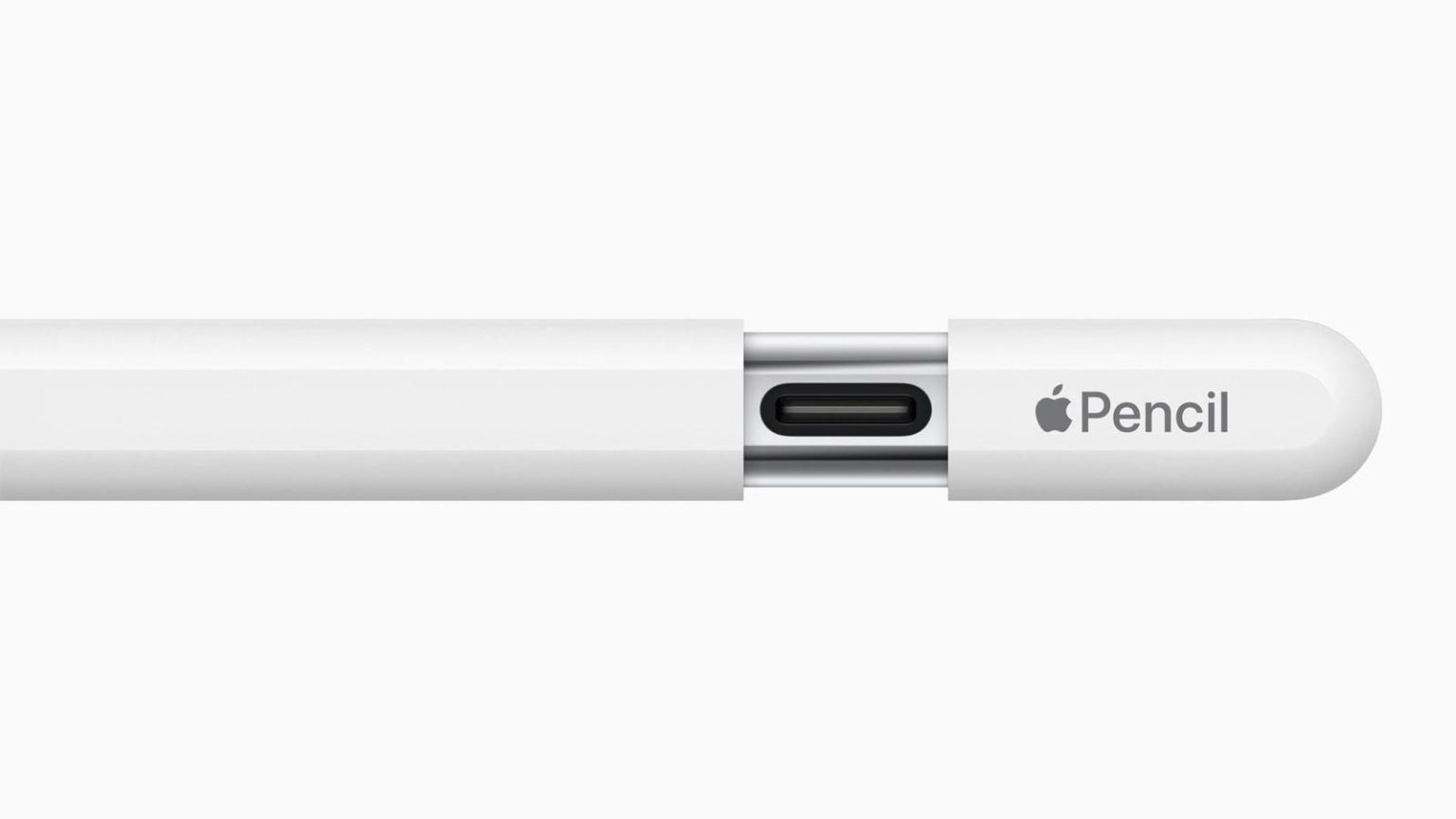In an anticlimactic end to a flurry of contradictory rumors, it turns out Apple on Tuesday didn’t release updated iPads. The company did, however, announce a new Apple Pencil which sports a USB-C port tucked away beneath what they’re calling a “sliding cap.” Apple says the new accessory costs $79 and starts shipping sometime next month.
My pal Jason Snell posted a thoughtful piece on Six Colors earlier today about what the new Pencil’s existence says about Apple’s product strategy, particularly in context of iPads. I have nothing more along those lines to add—in fact, I was dead wrong last night that Apple wouldn’t release a new Pencil without new iPads to accompany them—but Snell’s story inspired me to pen my own spin-off piece on the news.
Most interesting to me about this is, as ever, accessibility.
I have the second-generation Apple Pencil, the latest version, attached to my iPad mini. While I don’t use it much—how I yearn for any semblance of artistic ability beyond stringing words together—I nonetheless appreciate it on one, arguably undervalued, metric. From an accessibility perspective, my Apple Pencil’s strongest attributes is not what it does as a tool—it’s what it does in terms of maintaining itself. The magnetic attachment for storage and charging is perhaps Apple’s greatest materials triumph; you hold it close to the tablet’s edge and let physics (and software) do its work. I needn’t worry about pairing or plugging it in to charge—in a quintessential Apple way, it just works. That mantra, however oft-cited, is grossly underused in terms of its applicability to the disability community. Most in the tech press and other pundits claim the Apple Pencil’s pairing and charging is cool and convenient—and they’re absolutely right—but convenience and accessibility aren’t the same.
A dead Apple Pencil does good to no one, after all.
Compare and contrast the accessibility benefits of my Apple Pencil with the experience of using the Lightning and USB-C versions. What’s most striking about the latter models is they, regarding charging, require a level of hand-eye coordination many disabled people simply don’t have. Again, the broader tech press takes this for granted, but the reality is it’s not necessarily easy to fiddle with the caps on either of these Apple Pencils and then finagle a cable to charge the thing as needed.
It’s the Mt. Everest of fine-motor skills.
I have an original Apple Pencil floating around my office. It’s nice for what it is, but I don’t miss the rigamarole of slipping off the cap, putting it someplace it won’t get lost, and try to plug the Pencil into a Lightning port to charge. Once again, convenience is decidedly not accessibility.
This isn’t a trivial matter. To wit, it’s entirely plausible someone with disabilities of this sort may be eyeing, say, the forthcoming USB-C Pencil due to its lower cost (and functionality, obviously) but is reticent to buy it due to its fiddly charging mechanics. The caveat applies Apple dropped today’s announcement as a press release on its Newsroom site and no one outside of Apple Park has reviewed it, let alone seen it in real life. Nonetheless, as a lifelong disabled person with both significant visual and motor disabilities, the speculation here is clearly informed even sight unseen. The fact is, the USB-C Pencil isn’t a tenable choice if you’re someone with certain conditions—but there’s a ripple effect to that.
Cost matters. It’s likewise highly plausible the $129 Apple Pencil that I have isn’t affordable to a disabled person even though it may be the best option for them in a functional sense. The $79 USB-C edition is easier on the wallet and does have stuff like tilt sensitivity, low latency, and more—and yet be a bad choice based on charging alone. That it uses magnets for storage is good, but solves only half of the equation for users.
Put simply, the USB-C Pencil presents quite the conundrum that go beyond the normal scope. As ever, accessibility is found in everything.
All of this analysis is meant not to berate or disparage Apple for its design choices. As I wrote at the outset, Snell does well to reasonably hold the company’s feet to the fire. As always when discussing accessibility and assistive technology, what I’ve argued here is steeped in nuance. I have little reason to doubt the USB-C Apple Pencil is a nice product—certainly convenient by jumping on the USB-C bandwagon—but it’s nonetheless important to point out the potential problems.
Read the full article here





